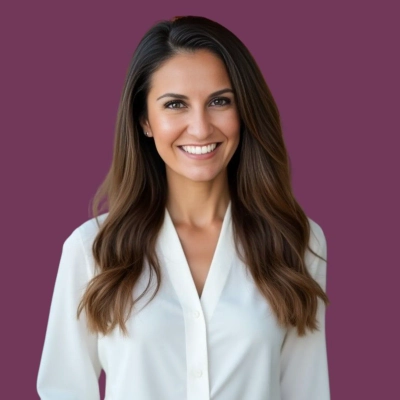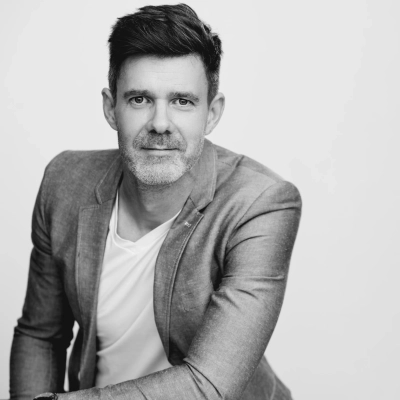How to Tailor Coaching Styles for Client Needs
Effective coaching requires a personalized approach that adapts to each client's unique personality and needs, as highlighted by leading experts in the field. Research shows that understanding subtle stress patterns and focusing on where clients feel most energized creates sustainable growth and authentic leadership development. By balancing structured plans with responsive guidance, coaches can help clients achieve meaningful transformation through tailored support that evolves with their journey.
Customize Coaching Based on Personality and Needs
My coaching style is never a one-size-fits-all approach; it's individualized, data-backed, and centered on the sales professional's specific personality profile and skill gaps. Effective coaching requires a fundamental assessment that goes beyond just performance metrics to understand how a person learns, communicates, and processes feedback. For instance, I use a more facilitative coaching style for experienced, high-performing reps, engaging them in brainstorming and strategic opportunity reviews, whereas I use a more directive approach for new hires or for correcting specific skill deficiencies like objection handling. In the end, the goal is always to empower the individual to self-diagnose their issues and take ownership of the solution.

Adjust Style to Meet Changing Client Needs
In order to tailor my coaching style to meet the unique needs of each client, I continuously check-in to ensure that the work we are doing is most effective. I would argue that an individual coaching client may show up with different needs on different days, and it is important to adjust my style to suit what is needed in every session. I am happy to share one particular example.
As a coach, I like to follow the lead of the client. I also make sure to bring focus and accountability to each session, supporting a future-oriented conversation and being sure to work with the client to identify next steps. I remember one session where I opened the session with a professional leader. When I asked about the focus of the session, I expected her to respond as she usually did, with a clear and specific definition of success for our conversations. Instead, the leader burst into tears and shared a personal story of her father's failing health and secret that her father had kept from her mother for many years. The stress of her father's declining health and keeping the secret from her mother was a lot and in this moment, it was all pouring out. I had to quickly adjust from my more typical results-oriented style to the role of simply holding the space for this leader to be with this emotion in this moment.
I offered a tissue, I offered support. After about 20 minutes, when it felt appropriate, I asked how the leader wanted to use our remaining time together. I suggested that we could reschedule, or we could continue to talk through this issue or identify another topic for our focus. The leader chose to use our time to work through this very emotional issue with a focus on identifying how she would would move forward with this secret.
Asking the client if our way of working is what is needed in the moment, or if I can do anything differently, empowers the coaching client to truly drive the engagement.
Face Reading Reveals Authentic Leadership Strengths
I know that every face tells a story, and no two clients are ever the same. This term "face" plays a special role for me because I use a tool called face reading. I don't focus on microexpressions or mimicry, but the structure of the face. I use form and proportion, which can't be hidden by words or body language, to see strengths that others overlook. I can see what drives a person, what drains them, and what they're built for. For example, One executive saw her strengths only in logic and numbers. However, her face revealed something far more powerful: intuition, emotional intelligence, and vision. These qualities were visible in her forehead, philtrum, nose tip, and mouth. After I made her aware of this, she started leading with those qualities, and everything shifted: her tone, her presence, and her team. The atmosphere around her changed. People began to follow her energy, not her position. This is what happens when you stop managing and start leading from your authentic self.

Address Underlying Stress Patterns for Sustainable Growth
For me, tailoring my coaching style always begins with understanding how a client relates to themselves under stress. In my experience, two people can face similar challenges but need completely different types of support to move forward. Some clients need structure and accountability to feel safe enough to take risks, while others need more space for reflection and emotional processing before they can act. I think that the key is to listen for what is underneath their goals, whether it is fear, perfectionism, or a deep desire for connection, and shape the process around that.
I once worked with a client who came in wanting to grow her private practice but felt stuck every time she had to market herself. Initially, I used a structured goal-setting approach, helping her break down tasks into clear steps. After a few sessions, though, it became clear that her resistance was not about strategy. It was rooted in fear of being visible and judged, which stemmed from earlier experiences of criticism in her career. I shifted my approach from performance-based coaching to something more reflective. Together, we explored how those fears showed up in her body and how they influenced her confidence. Once she could name and regulate that fear, she began following through on the same goals that had once felt impossible.
In my opinion, flexibility is what makes coaching effective. Every client brings a unique mix of strengths, insecurities, and learning styles. I think that by paying attention to how someone responds emotionally and physiologically, you can adapt your methods to support both their growth and their nervous system's capacity for change. For me, that balance between structure and empathy allows clients to build confidence in a way that feels sustainable rather than forced.

Balance Verbal Input with Nervous System Response
I tailor my coaching style by actively listening to what clients communicate verbally while also observing how their nervous system responds during our sessions. This dual awareness helps me customize my approach. Some clients perform best with clear structure and accountability checkpoints, while others need to create emotional safety and processing space before taking action.
I recently worked with a high-achieving executive seeking quick stress management strategies. However, whenever we focused on performance tools, I noticed physical signs of overwhelm in her responses. Recognizing this pattern, I adjusted my approach by first establishing somatic grounding techniques to help her regulate. Only after she developed this foundation did I gradually introduce the strategies she initially sought. This modification not only helped her achieve her goals but ensured she could maintain progress without experiencing burnout.

Coach to the Person Not the Plan
I coach to the person, not the other way around. It's about reading what they actually need versus what they say they need or what worked for the last client.
Here's how I figure it out:
First session, I'm watching everything—body language, energy shifts, what lights them up versus shuts them down. Do they lean in when I challenge them or pull back? Do they think out loud or need processing time? Are they drowning in options or starving for structure?
I also ask directly: "How have you learned best in the past?" and "What hasn't worked?" People usually know, even if they haven't articulated it.
Real example:
I had a client, let's call him Marcus, who kept missing his performance targets. Smart guy, experienced, but stuck. My typical move would be breaking down goals, creating accountability checkpoints, tracking metrics. That's my bread and butter.
Three weeks in, nothing's moving. He's hitting our checkpoints but the needle isn't budging at work. I'm frustrated, he's frustrated.
Then during one session, he mentioned offhand that his best ideas come during his morning run. That comment unlocked everything. Marcus wasn't an "action plan in a conference room" guy—he was a processor. He needed space to think, not more structure.
I flipped the script. Homework became "take this question on your run" instead of "complete this worksheet." Our sessions shifted to me asking bigger questions and then shutting up for longer. I stopped filling silence.
Two months later, he'd not only hit his targets but redesigned his entire workflow. Turned out he didn't need a taskmaster—he needed permission to think differently about the problem.
Bottom line: The moment I feel like I'm pushing harder than they're pulling, I know I'm coaching my way, not their way. That's my signal to adapt.

Start Where Clients Feel Most Alive
I tailor my coaching by matching the pace and focus to each client's vision and personality. Some clients lead with strategy and want clear funnels, websites, and launch plans. Others feel more comfortable starting with brand clarity, messaging, or passive income models before diving into marketing mechanics. I always ask which area feels most alive for them and begin there.
One client I coached came to me eager to build passive income but uncertain about her brand identity. We began working on her messaging and niche clarity first, rather than rushing into funnels or course launches. Once her brand voice felt strong and consistent, she became far more confident when she started creating her offers and marketing them. That adjustment, slowing down to build a brand foundation before scaling, led to smoother launches and less second-guessing.
In my opinion, coaching is most effective when it adapts to where the client is ready to go next rather than pushing a fixed path. In my experience, giving space for brand clarity first strengthens everything that follows: the offer, the marketing, and the visibility. For me, that fluid, responsive way of coaching helps clients build a practice that feels aligned, sustainable, and uniquely theirs.



